Recent Articles
Popular Makes
Body Types
10 Safest Sports Cars

2021 Toyota GR Supra 2.0 ・ Photo by Toyota
There are a lot of factors to consider in a sports car. We expect that most folks buying a sports car are looking at speed, style, and handling, while safety is relatively far down the list. Still, when you’re buying a car that you’ll drive fast, you want it to survive an accident. And when you choose a car with flashy styling that compromises your outward visibility, you’ll appreciate features like blind-spot monitoring and emergency automatic braking.
Today, we’ve rounded up 10 of this year’s safest sports cars, based on crash-test performance (when available) and crash-avoidance technology. For the purposes of this article, we’re defining “sports cars” broadly: any vehicle that exists for the purpose of maximizing performance and driving pleasure. Read on for our selections, which we list alphabetically.
1. 2022 Audi S5
The Audi S5 is a luxury performance car with an elegant two-door coupe or convertible body and a hearty 349-horsepower V6 engine. It’s luxurious and easy to drive gently, yet it also has lively handling.
Priced from $53,900, the S5 comes standard with automatic emergency braking and a lane-departure warning, and it’s also widely available with blind-spot monitoring and Pre Sense systems that can detect and prepare for impending frontal, rear, or side impacts. It hasn’t been fully crash-tested, but the S5 and its lower-performance A5 variant earned top scores in many of the Insurance Institute for Highway Safety’s evaluations.
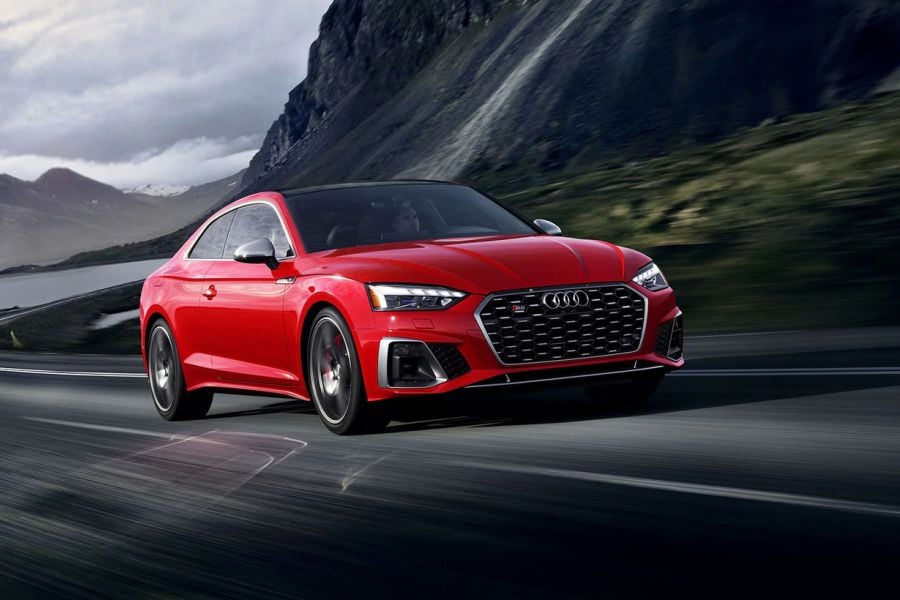
Photo by Audi
2. 2021 BMW 2 Series
The BMW 2 Series is a subtly styled rear-wheel-drive two-door coupe and convertible with optional all-wheel drive. While it’s not as low and sleek as other BMW coupes — which might keep some people from considering it a sports car — it has delightful steering and handling, along with ferocious acceleration from its optional 335-horsepower or 405-horsepower six-cylinder engines.
Like the S5 and most other sports cars, the 2 Series hasn’t been fully crash-tested, but it performed well where it has been tested. And it comes with automatic emergency braking and a lane-departure warning as standard equipment, with blind-spot monitoring as a common extra-cost option. Prices start at $35,900 for the 248-horsepower four-cylinder 230i version and $46,350 for the six-cylinder M240i.
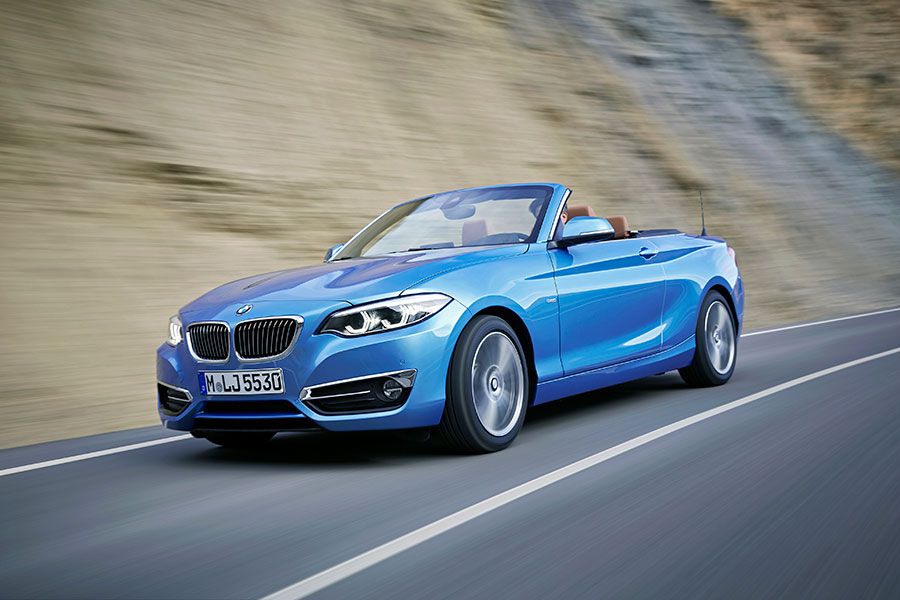
Photo by BMW
3. 2021 Ford Mustang
The Ford Mustang is one of the best-selling sports cars of all time, and the current generation also delivers respectable crash-test performance and far more standard safety equipment than its closest rivals. Every Mustang includes automatic emergency braking, a lane-departure warning, and a blind-spot monitor — respectable for any vehicle with a base price of $27,205, much less a retro, high-performance, rear-drive two-door.
Sold as a coupe or convertible, the Mustang starts with a 310-horsepower turbocharged four-cylinder engine and upgrades to a choice of V8s ranging from 460 to 760 horsepower. Modern Mustangs also deliver higher handling limits than some past iterations, broadening their appeal beyond straight-line speed. And given their safety features and affordability, it’s easy to see why Mustangs are easy sports cars for buyers to justify.

Photo by Ford
4. 2021 Honda Civic Type R
The Honda Civic Type R is a raucous “hot hatch” — an economy car with a monster 306-horsepower turbo engine stuffed under its little hood. This wild-looking five-door hatchback is widely considered one of the best-driving front-wheel-drive cars on the market, helping justify its $37,895 base price. This isn’t a fancy sports car, and it’s not conventionally attractive, but its performance justifies its price.
The Type R doesn’t forget about everyday qualities, either. Though some shoppers will bemoan its lack of an automatic transmission option, folks who can drive a stick will appreciate the Civic’s roomy backseat and cargo hold. Excellent crash-test scores and standard safety features — including automatic emergency braking and road-departure mitigation — further enhance its sensibility.
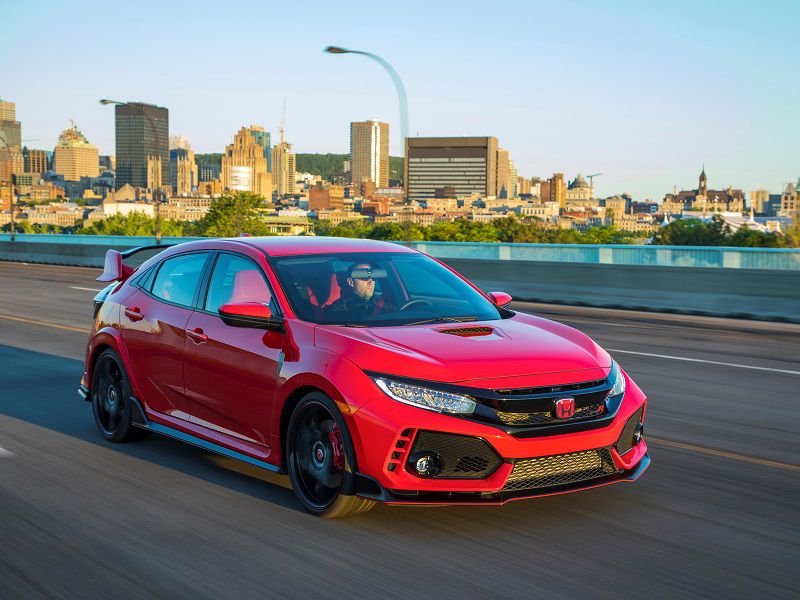
Photo by Honda
5. 2021 Hyundai Veloster
Another compact car that you can load up with lots of power and lots of safety features is the 2021 Hyundai Veloster. While you can pay as little as $18,900 for a Veloster, that model has just 147 horsepower; if you’re thinking about sports cars, you want the 201-horsepower turbo (priced from $23,450) or the max-performance Veloster N ($32,250).
Whichever turbocharged Veloster you choose, you’ll get automatic emergency braking, blind-spot monitoring, and lane-keeping assistance. You’ll also get excellent crash-test performance, including an IIHS Top Safety Pick designation. The Veloster isn’t the fanciest car you can buy, but this little hatchback is relatively useful, great fun to drive, and safe, all without breaking the bank.

Photo by Hyundai
6. 2021 Lexus RC
Turning back to luxury sports cars, the 2021 Lexus RC is a rival to the Audi S5 with less handling precision and a less-magnificent interior — but a lower price and even more standard safety features. Automatic emergency braking, a lane-departure warning, and blind-spot monitoring are all among its standard equipment. To some eyes, the sleekly designed RC will also look more like a sports car than some of its rivals, even though its bigger strength is a quiet ride.
Prices for the 2021 RC start at $42,220 with a 241-horsepower four-cylinder engine, $45,150 with a 311-horsepower V6, and $65,975 with a 472-horsepower V8. The latter, called the RC F, also has higher handling limits than other RC models.

Photo by Lexus
7. 2022 Subaru BRZ
The Subaru BRZ is a small rear-drive sports coupe that’s newly redesigned for 2022. While the new BRZ doesn’t stray from the original’s balance of light weight, razor-sharp handling, and relatively affordable pricing, it does add advanced safety features for the first time: Subaru’s EyeSight technology suite.
As long as you choose the optional automatic transmission, the BRZ includes automatic emergency braking and a lane-departure warning. The top trim level also includes blind-spot monitoring. The 2022 BRZ is priced from $27,995. No crash-test scores are available for the new model, but even the old 2013-era BRZ performed well; that makes us optimistic that this coupe will be one of the safest sports cars.
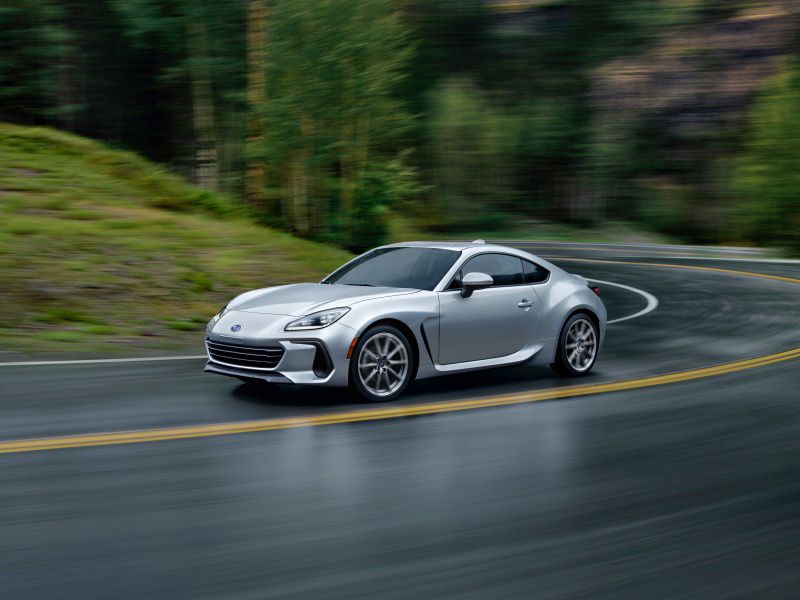
Photo by Subaru
8. 2021 Subaru WRX
A very different Subaru sports car is the WRX. While the BRZ is light, sleek, nimble, and street-focused, the WRX is a rally-brawling brute that looks like an ordinary economy sedan but goes like stink. With standard all-wheel drive and a choice of 268-horsepower or 310-horsepower four-cylinder turbocharged four-cylinder engines, the WRX is a machine that can perform in a wide variety of conditions.
It can also perform in a crash. The WRX is an IIHS Top Safety Pick and earned a top five-star rating in all National Highway Traffic Safety Administration tests. And certain trim levels include collision-avoidance features such as automatic emergency braking, a lane-departure warning, and a blind-spot monitoring system.
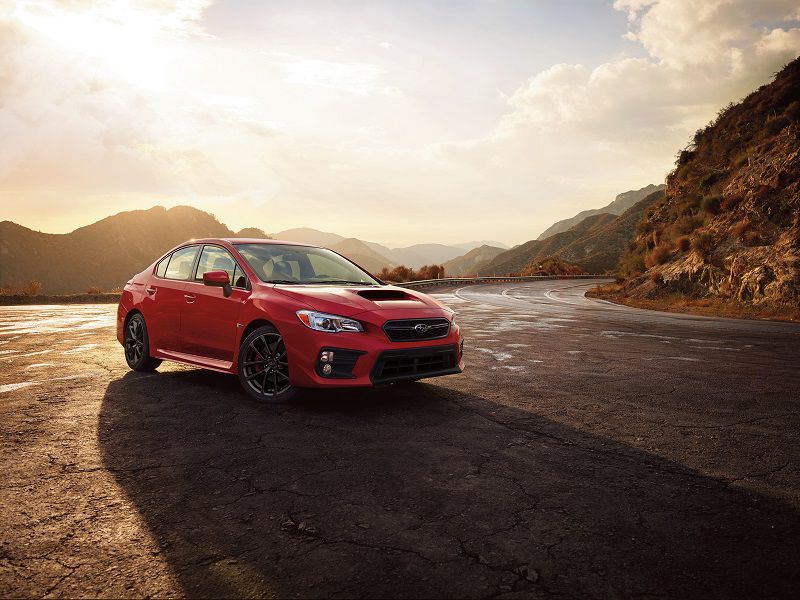
Photo by Subaru
9. 2022 Toyota Supra
The Toyota Supra is a two-seat rear-drive sports car with delightfully crisp handling and lively acceleration from either of its available engines: a 255-horsepower four-cylinder or a 382-horsepower six. It wears exuberant Japanese styling, yet mechanically, it has the bones of a BMW Z4. And while its $43,190 base price is high for a Toyota, it comfortably undercuts the Z4.
And since both Toyota and BMW are big believers in safety, the Supra comes with lots of crash-avoidance technology. Automatic emergency braking and a lane-departure warning are standard, and blind-spot monitoring is either optional or standard on every trim level. While crash-test performance is not available, we have confidence in the safety engineering behind the Supra.
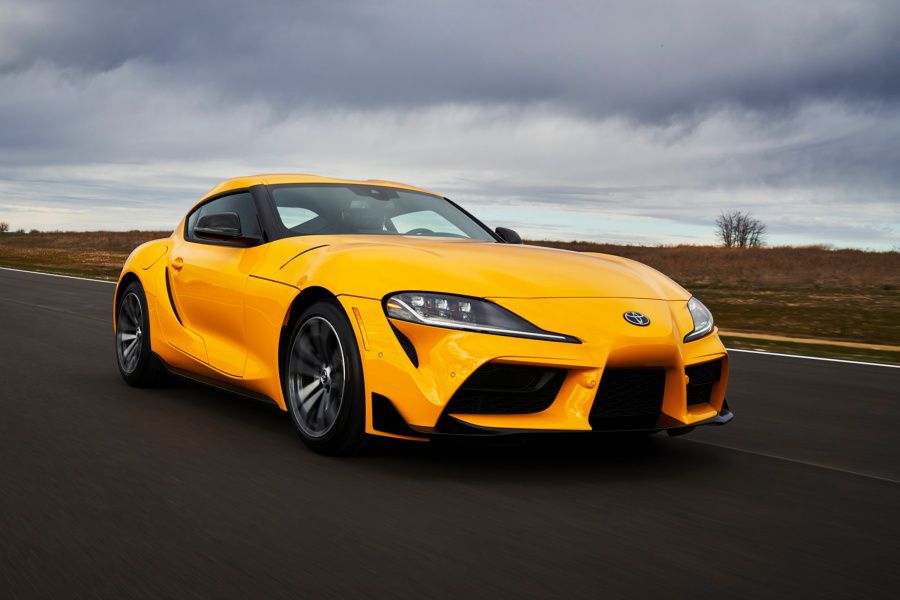
Photo by Toyota
10. 2021 Volkswagen Golf GTI
Like the Honda Civic Type R, the Golf GTI is a sportier version of an everyday economy hatchback. The GTI is a milder form of sports car, though, with 227 horsepower and an Audi-like gentility. It’s a delightful car to either drive gently or to push harder, and while it doesn’t have generous rear legroom, ample cargo space and a smooth ride make it a sports car that doesn’t require much sacrifice.
The GTI is priced from $28,695, and automatic emergency braking and blind-spot monitoring are standard equipment. VW oddly saves a lane-departure warning for the top trim level, but the precise, responsive steering is an even more valuable safety feature to the right driver. Crash-test performance is impressive, too.
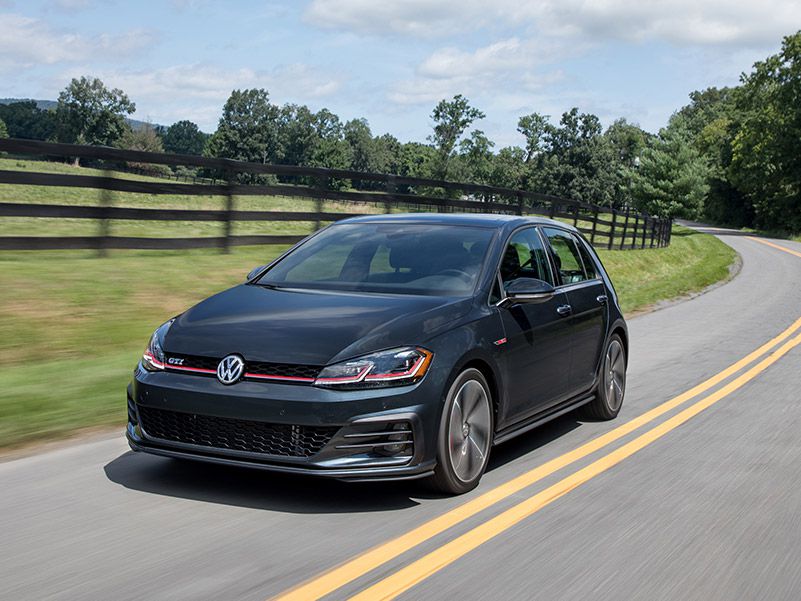
Photo by Volkswagen